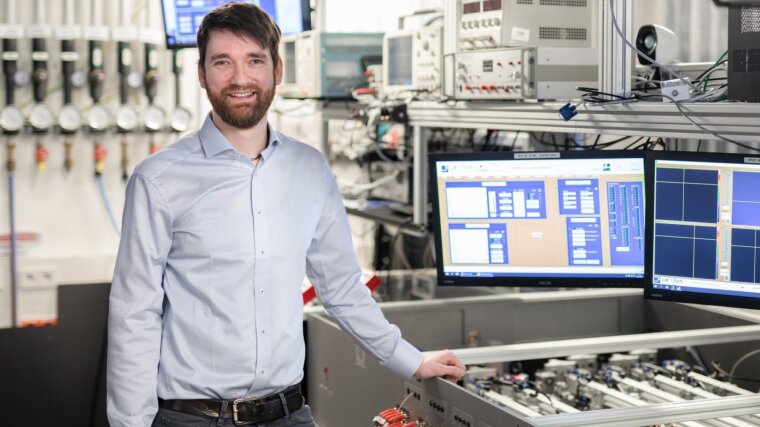
- Light
- Forschung
Published: | By: Ira Winkler
Perseverance and belief in himself have paid off handsomely for Robert Klas, a former doctoral student in Dr. Jan Rothhardt's research group "Soft X-Ray Spectroscopy and Microscopy". The six years of the doctorate were not only a great personal maturing process - the knowledge gained for further research is outstanding.
Downs and Ups
"In the second, third year, I went through a pretty big crisis: I simply could not prove my calculations in the lab, even though I was sure they were right! That cost me a lot of motivation to keep going and believe in myself. I received great support from my supervisors Dr. Jan Rothhardt and Prof. Jens Limpert. And then finally the breakthrough in the lab was achieved, setting an average power record in the EUV range of 10 milliwatts - that's a hundred times more power than similar systems at the beginning of my PhD!" reports Robert Klas.
EUV (extreme ultraviolet) describes the spectral range of electromagnetic radiation between 10 nm and 121 nm wavelength, which characterizes a strongly short-wavelength range at the border of X-rays. "With this type of EUV source, experiments can now be performed on a laboratory scale that were only possible at synchrotrons a few years ago. Unlike synchrotrons, which are large-scale facilities with correspondingly high acquisition and operating costs, our setup fits on a lab bench," says Robert Klas, explaining the team's achievement. Thus, the compact setup costs only a fraction of such a large-scale research facility, so that the long waiting times at the large-scale facilities can be circumvented by the low acquisition costs and thus research results can be achieved more quickly."
Big impact into microchip fabrication & microscopy
The extremely small wavelength in EUV opens up many possibilities for the investigation of correspondingly small structures: Specifically, it is possible to inspect masks for EUV lithography for microchip fabrication with these light sources and thus prevent errors. These cutting-edge systems allow millions of transistors to be written onto a wafer the size of a fingernail. This gives an idea of how sustainability will be improved in terms of material savings in chip manufacturing.
This new technology also has a strong impact on the field of microscopy: Due to its wavelength in the nanometer range (one nanometer corresponds to one millionth of a millimeter), color images can be realized under an EUV microscope with a resolution of 18 nm - 10 times smaller compared to conventional light microscopes, which provide color images but only have a resolution of just under 500 nm. Scanning electron microscopes also achieve high image resolution, but again only have a black and white image of the object being imaged. In future, therefore, bacteria and cells can be examined much more precisely for their proportions of various substances such as carbon, lipids etc. "In the future, our technology will allow us to drive biological and medical studies and hopefully examine different types of viruses. Eventually, we hope to be able to image DNA with a diameter of about two nanometers using this technique," he said, describing the level of detail "In one experiment, we achieved a so-called field of view in the size of 100 x 100 micrometers. Figuratively speaking, this allows us to find a one-euro coin on the size of a soccer field."
Excellent performance
This doctorate, which was produced in cooperation with the Helmholtz Institute Jena and the Fraunhofer Institute for Applied Optics and Precision Engineering IOF, was awarded 3rd place in the Hugo Geiger Prize on March 21, 2023. During the "Symposium Netzwert", the largest internal event for Fraunhofer researchers, the prize donated by the Bavarian State Ministry of Economic Affairs, Regional Development and Energy was handed over by the State Secretary Roland Weigert: "With their visionary ideas, the prize winners have achieved top performances in very different fields of research. [...] The award-winning work is not only characterized by scientific excellence, but also offers great potential for application and thus for economic success."